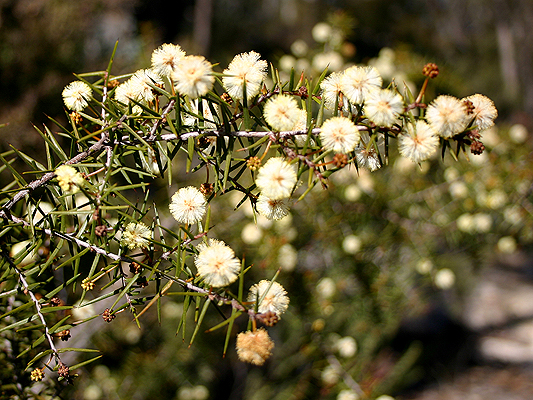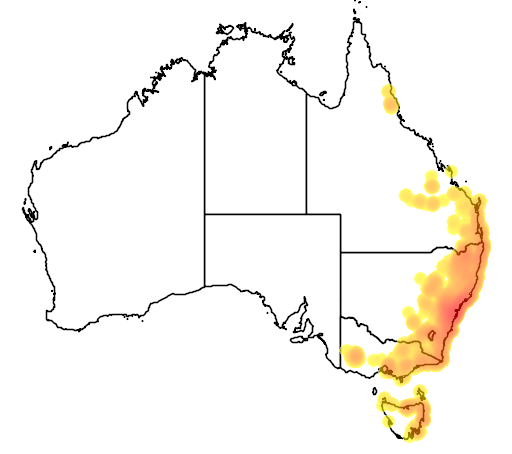Description
Common names
Prickly Moses, Juniper Wattle, Prickly Moses.
Scientific names
Acacia ulicifolia.
Family
Mimosaceae.
Genus
Acacia.
Name origin
Refers to the gorse-like foliage (Ulex genus).
Rainfall
400mm+.
Growth rate
Fast.
Growth height
0.5-2m.
Presence in Australia
Locally in Murrumbidgee areas Snowball-Stony; Gilmore "Lower Reaches"; Sandy and Gocup. Primarily east of Hume Highway.
This specie has been identified in the following Australian states: Qld, NSW, ACT, Vic, Tas.
Habitat
Dry sclerophyll forest and woodland, usually on sandy soil.
Habit
Spreading to erect shrub 50cm to 2m high. Smooth grey bark, resinous hairy branchlets and more or less rigid and straight pointed "leaves" 8-15 mm long.
Site preference
Moist well-drained light to heavy soil. Dappled shade or partial sun. Tolerates frost.
Characteristics
Short-lived. Hardy. Fast-growing.
Flowering
Pale yellow to almost white, usually Apr-Oct.
Seed collection
Mid Oct to late Jan.
Propagation
From scarified seed or cuttings. Pour boiling water over seeds and soak for several hours before drying and sowing.
Regeneration
From seed. particularly after fire.
Shade and shelter
Useful low-level cover in windbreaks.
Land protection
Useful in controlling soil erosion, due to soil-binding fibrous roots. Legume, improves soil fertility by "fixing" nitrogen.
Wildlife
Prickly foliage good refuge for small birds. Flowers are a pollen source for native moths, butterflies and other insects, and nectar source for birds such as honeyeaters. Seed a food source for parrots and native pigeons.
Ornamental
Useful barrier, screen or hedge with attractive foliage, for low maintenance areas. Hardy and adaptable.


